The Metropolitan











An Allied Golf Association of the USGA providing a variety of golf services to clubs and golfers in the Metropolitan St. Louis, Central, and Southern Illinois region. WHAT
- Provide GHIN Handicap Service to 140+ Member Clubs under the World Handicap System
- Provide the USGA Course/Slope Rating service to our Member Clubs
- Regional authority on the Rules of Golf and Amateur Status
- Conduct twelve (12) Metropolitan Championships each season
- Conduct USGA Qualifying for eight (8) USGA Championships each season
- Conduct three (3) Championships in Illinois
- Conduct the Amateur Series of Events for golfers of all ages and abilities

METROPOLITAN CHAMPIONSHIPS Amateur
9-Hole
Mid-America
ILLINOIS CHAMPIONSHIPS Southern


EXECUTIVE DIRECTOR
Curt Rohe - curt@metga.org
DIRECTOR, MARKETING & COMMUNICATIONS
Caroline Buchan - caroline@metga.org
2024 PJ BOATWRIGHT INTERNS
Will Coleman
Jason Denham
Brennan Strubberg
EXECUTIVE BOARD
Officers
Scott Engelbrecht, President/Treasurer
Mike Marquart, Secretary
At Large Members
John Bugh
Stan Grossman
Kelli Kirchoff
Mike Marquart
Rick Meyer, Jr
John Moore
Mick Wellington
ADVISORY COMMITTEE
Scott Thomas, Chairman
Tom Barry
Skip Berkmeyer
Chris Kovach
Ryan Eckelcamp
Tom Portner
Curt Rohe
THE METROPOLITAN
CONTRIBUTING WRITERS
Dan O’Neill
MVGCSAA
Dr. Zach Cutler

Curt Rohe - Executive Director
Greetings Members! Hope this edition finds you well and still teeing it up as we have had some amazing weather these last few weeks. We are approaching the final stretch of score posting as I’m sure you will see later in the newsletter, November 14 is the final day to post in our region. The question of why we have a season from March 1 to November 14 can be answered as well later on...please read!
We wrapped up our 2025 championship season just last weekend with the Mid-America Cup matches at Glen Echo and we are close to wrapping up the 2025 schedule and will get that out as soon as we can. One tool on the website that many do not know about is our downloadable Google Calendar that update as we do. Click on the following link to download and save this calendar and receive those updates automatically into your devices: DOWNLOADABLE CALENDAR
Our wrap up evening of 2024 will take place Friday, November 15 at Annie Gunn’s in the Barn! Always a special evening recognizing the accomplishments of our players of the year, champions and facility award winners. And a special award this year as we recognize and honor John Kueper for his long-time commitment to the game in this region with our Meritorious Service Award, the highest honor we bestow on those who have served the game. We would love to see you at Annie Gunn’s on November 15, registration is available at this link: 2024 POY AWARDS
This past week we held a very special day with the official groundbreaking of Normandie Reimagined and the new Jack Nicklaus Signature Golf Course that is coming to Normandie. I was honored to be part of the group “on a shovel” in the ceremony with our team and distinguished community leaders including Dr. Sam Page, Councilwoman Rita Days and Senator Brian Williams. Stay tuned, a lot more to come with updates as the “real” work is beginning on building this new, and what will be extraordinary golf course.
As always, thank you for taking a few minutes to read The Metropolitan. While the championship season has come to an end, there is always a lot to do to prepare for the next season. We appreciate your support as a member of the Metropolitan Amateur Golf Association and cheers to a blessed upcoming holiday season as our next issue will be at the end of 2024!
425 - The number of golf courses completed by Nicklaus Design, spread over 45 countries. And that doesn’t include the new Normandie Golf Club. The renovation and redesign of Normandie, which officially broke ground in a ceremony on Oct. 30, will be led by the legendary Jack Nicklaus and Nicklaus Design, with Nicklaus donating his efforts to the cause. Retaining the foundation of the original routing, the re-imagined course will be re-grassed and renovated with new tees, putting greens, bunkers and a state-of-the-art irrigation system. The new Normandie will stretch from its current 6,497 yards to 7,007 yards when the work reaches its estimated completion in the Fall of 2025. Most important of all, the historic course will remain public after the renovation is completed.
5 - The number of left hand-swinging players who have won major championships. That list includes Bob Charles, Mike Weir, Phil Mickelson, Bubba Watson and Brian Harman. For many years, the British Open was the only major to be captured by a left-hander, with Charles winning at Royal Lytham & St. Annes in 1963. However, with Weir winning the Masters in 2003, that occurrence happened nine more times during the past 22 years. Mickelson has six majors, including four Masters, a PGA and a British Open. Watson won the 2012 Masters and Harman won the 2023 British Open at Royal Liverpool. That said, where left-handers are concerned, the U.S. Open remains the only major championship pitching a shutout.
9 - The number of passes Hale Irwin intercepted during his last two seasons of playing defensive cornerback at the University of Colorado. Irwin started out as a quarterback before being moved to defense, then became a two-time All-Big 8 selection. In 1989, he was named to Colorado’s
All Century Team in football. Don’t you wonder how Irwin might do playing for Deion “Prime” Sanders? Of course, Irwin always had golf to fall back on. He won the 1967 NCAA individual golf title and still holds the Buffalos record for single-season stroke average (71.86).
30
- As in inches, or the length of the putt Sam Snead missed on the 18th green at St. Louis Country Club that cost him the U.S. Open and - in the end - a career Grand Slam. Snead won each of the other three majors during his storied career. But in 1947, Snead and Lew Worsham were tied atop the leaderboard after 72 holes at SLCC. The two played an 18-hole playoff on Sunday, June 15 and when Snead missed the short putt on the 18th hole, Worsham prevailed by a stroke.
4
- The age of the youngest golfer to ever record a hole in one - and no, it wasn’t Tiger Woods. On December 18, 1999, Christian Carpenter was 4 years and 195 days old when he put his tee shot in the jar at the Mountain View Golf Club, Hickory, N.C. More recently, Carpenter is a pro and trying to crack through to the PGA Tour.
67
- A most remarkable accomplishment in golf is to shoot your age - or better. The aforementioned Snead was the youngest PGA Tour player to achieve the feat when he fired a second-round 67 in the 1979 Quad Cities Open. Snead then topped that with a final round 66. Fred Couples was 63 when he shot a final round 60 to capture a PGA Tour Champions event in 2022. Couples called it the “greatest round of his life.” Minnesota amateur Thomas Edison Smith shot his age a whopping 3,359 times. That said, in 1972, Arthur Thompson of Victoria, British Columbia carded a score of 103, making him the oldest ever to shoot his age.


It was two cold days for the 32nd Metropolitan Amateur Championship at Spencer T. Olin Golf Course. After months of delay due to a sinkhole nearby, nothing could stop these ladies from finally competing. Following the first round, Manon Labeur led the Championship division at even par, while Barbara Dunston led Flight A at five-over par and Jillian Tedesco led Flight B at two-under par. Play of this par 72, Arnold Palmer Course began at 9:00am.
For the Championship, Manon Labeur of the Metropolitan eClub doubled down to hold her place on the leaderboard. With a bogey-free front nine, Labeur put space between her competitors and herself by another two strokes. Things got a little rocky after making the turn, but the fight was still there. Labeur kept her back nine score to even par to finish the Championship at two-under (-2) par. The two tied for second after Round One could not quite find their footing today to get in the mix. Ellen Port of Sunset Country Club had a few mishaps that left her making the turn at four-over par for the

day and eleven back of the lead at nine-over par. Ally Suhre of the Gateway PGA Jr Golf Club also struggled after starting the day at five-over par. Suhre would make the turn with a total of twelve-over par for the first 27 holes. Port minimized the damage on the back-nine to finish the Championship at ten-over (+10) par and Suhre finished at fif teen-over (+15) par. This would leave Labeur the definitive Champion.
As for the Net Flights, things were tightly contested for the top spot. Barbara Dunston of Franklin County Country Club (IL) started the day with a one-stroke lead, but that had been diminished by the turn. Liz Little of Norwood Hills Country Club came in to make the turn and get through Hole 10 tied with Dunston at ten-over par. Little broke away from the pack on the back nine to finish the Championship with a score of net seven-over (+7) par. Falling back, Dunston concluded her run at net nineteen-over (+19) par.
Kathleen Duncan of Salem Country Club swooped into second in Flight A at eighteen-over (+18) par. In Flight B, Jillian Tedesco started out on top and didn’t leave much wiggle room for her opponents. Tedesco finished the Championship with a score of net five-over (+5) par. Maria Morrison the St. Louis Women’s Golf Association finished in second at net eleven-over (+11) par.
Manon Labeur takes the 32nd Metropolitan Women’s Amateur title in a landslide victory. Ellen Port is the runner-up. Liz Little is the Flight A Champion and Jillian Tedesco is the Flight B Champion.
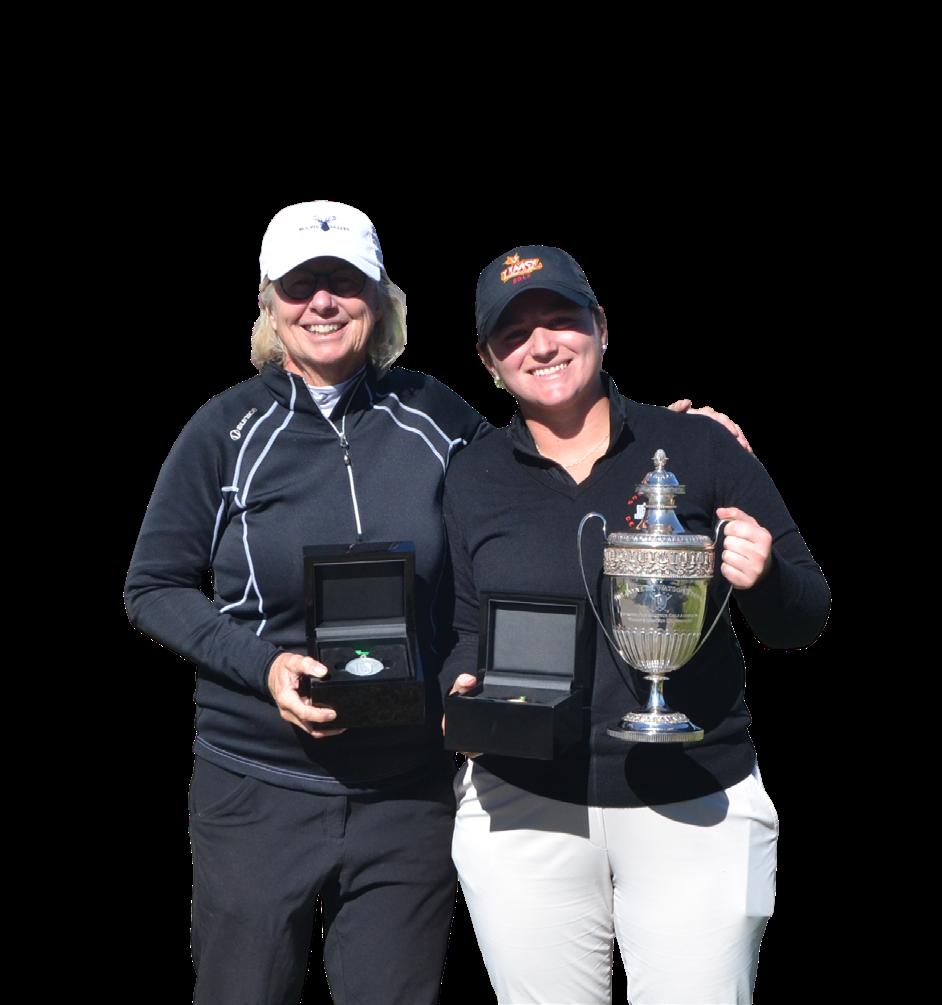

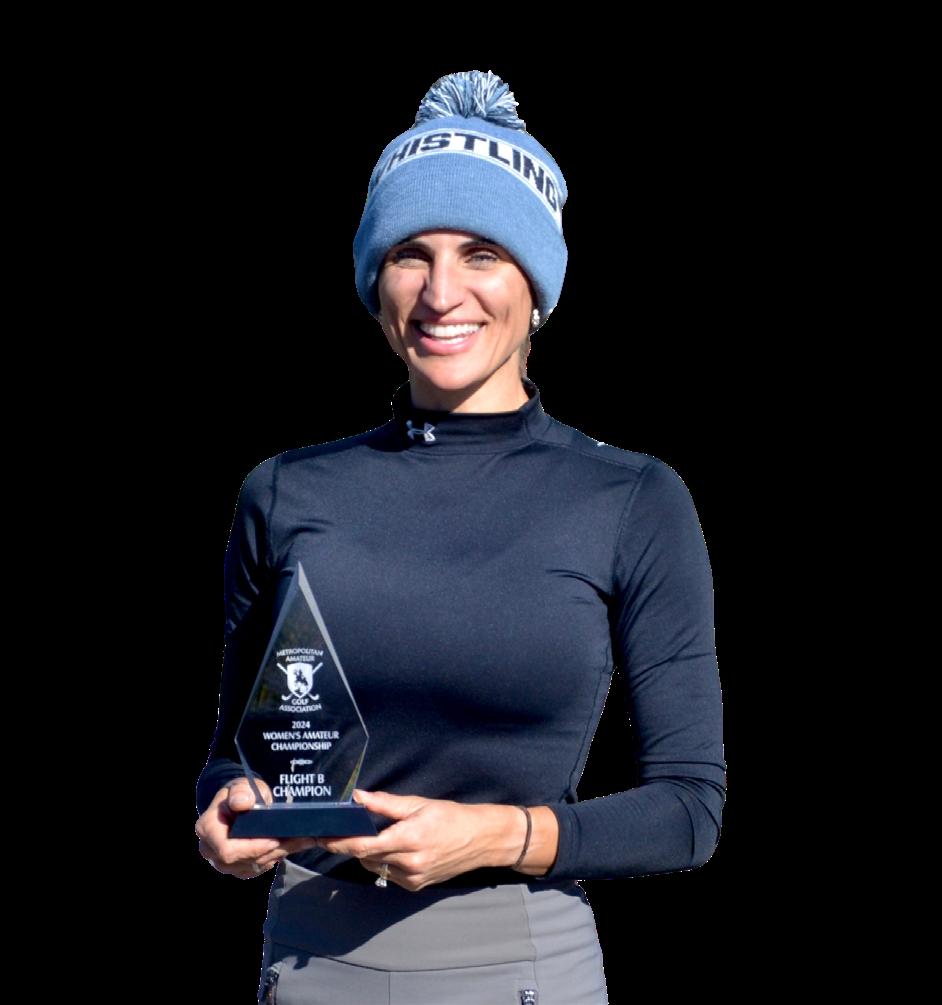
The Metropolitan Senior Amateur Championship at Bogey Hills Country Club is one that our Champion is sure to remember. Just falling into the Senior category this year, Richard “Skip” Berkmeyer made his debut in the 32nd Senior Championship.
Metropolitan championships are not new to our newest senior champion. Skip Berkmeyer’s name is on the Jim Tom Blair (Amateur), Old Warson Cup, and James S. Manion (Open) trophies, so it should come as no surprise that in his first major senior championship, he added his name to the George F. Meyer Trophy. Berkmeyer had to work for this one, starting the day 4 shots back of the Round 1 leader John Moore. Moore started the final day at one-over (+1) par.
And work for it he did! After double bogey, 6, at the first, Berkmeyer quickly found himself 5 shots back of the lead. However, the venerable champion he is, he calmed down and would go 7-under the rest of the round to finish with a 5-under, 66 - 10 shots clear of his Round 1 score. As late as Hole 14, Berkmeyer was still 1-shot back of Moore, but a bogey at the par 3, 16th by Moore would even things up between the 2, who were playing in separate groups.
While Berkmeyer would find the right rough on 17, his approach shot gave him a great look at birdie from approximately 10 feet. He would calmly roll in that birdie while Moore made bogey at 16 and take a 1-shot advantage into the closing hole. Berkmeyer would make par at the finishing hole while Moore made double bogey on 17. Berkmeyer would find himself at the champions podium again in another Metropolitan Championship. John Moore would be the runner-up at four-over par.
Skip’s name is now forever engraved on 4 Metropolitan trophies, a first and quite possibly the only name to ever hold that distinction!
This victory also catapults Berkmeyer into the lead of 2024 Metropolitan Senior Player of the Year points standings. Another milestone in the career of Skip Berkmeyer!

In the Age Division Groups, Low Gross and Low Net honors were delivered. The following are how the players stacked up:
Age 50-59, Low Gross: Eric Fogleman
Age 50-59, Low Net: Dave Gambino
Age 60-64, Low Gross: John Chastain
Age 60-64, Low Net: Matt Hall
Age 65-69, Low Gross: William Schmidt
Age 65-69, Low Net: Crist Dubis
Age 70-74, Low Gross: Jim Seeley
Age 70-74, Low Net: Ken Caldwell
Age 75 and Over, Low Gross: Bill Wunderlich
Age 75 and Over, Low Net: Tom Leahy


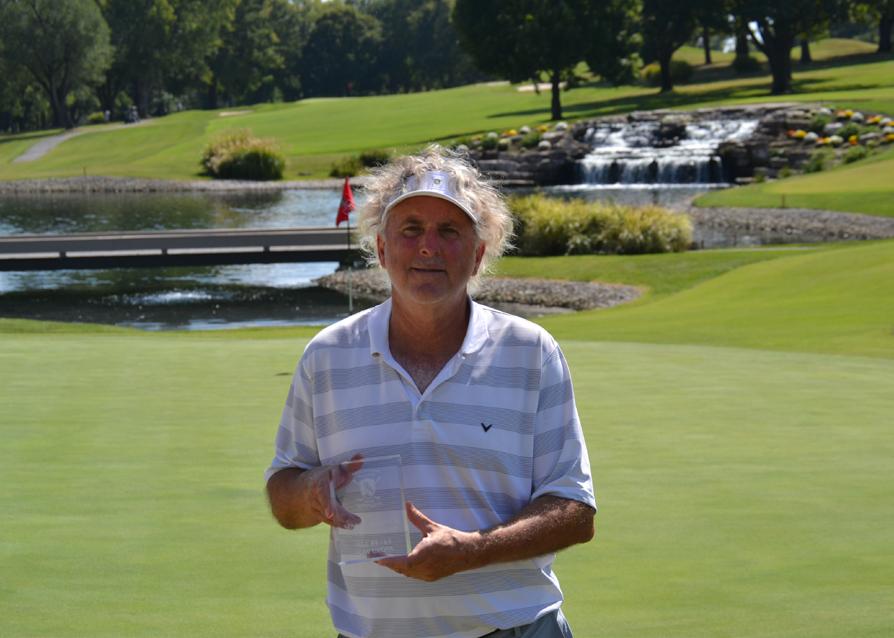
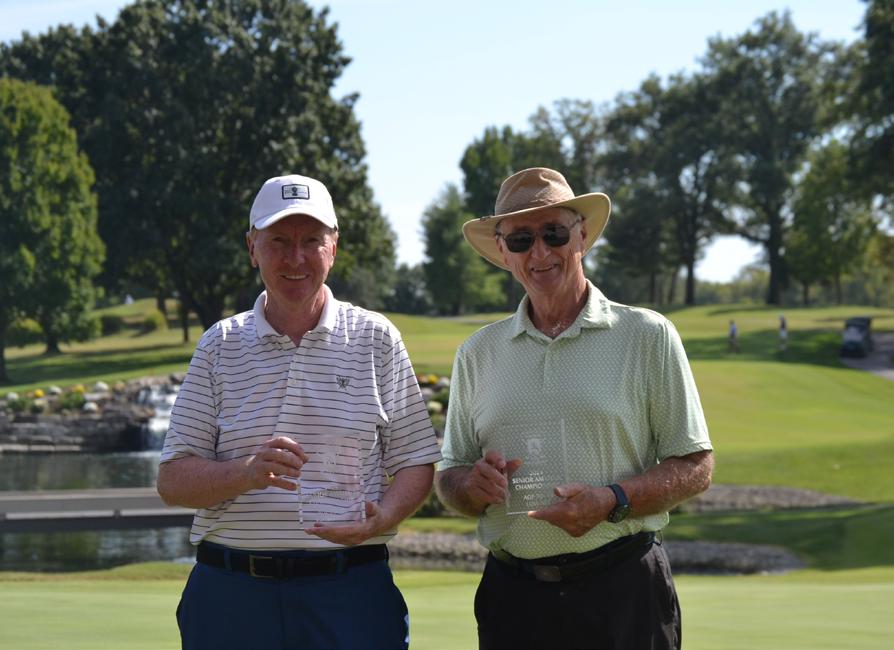
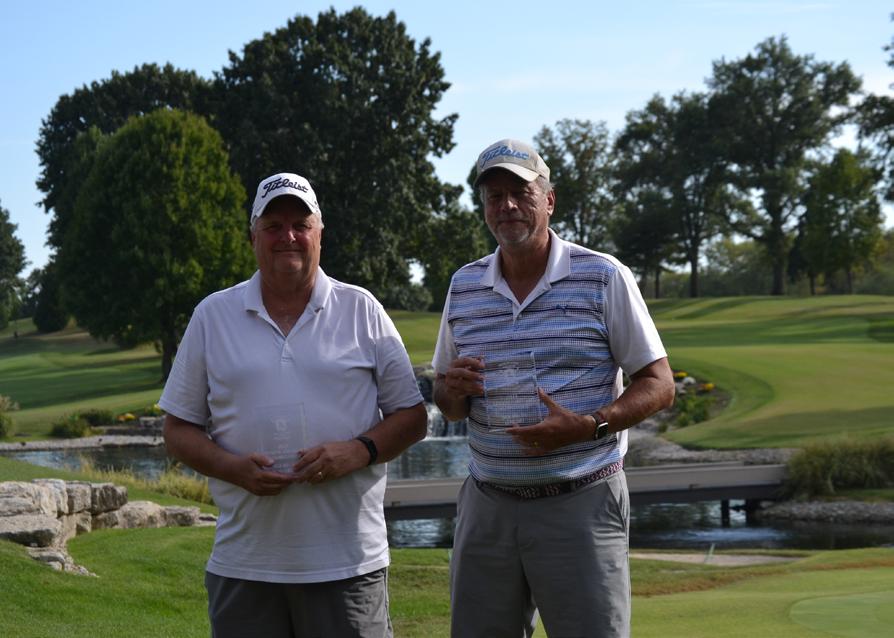

The Echo is still ringing a year later in the Thomas O. Sobbe Cup!
After a long summer, the time for the Thomas O. Sobbe Cup Final is finally here. The match-up is sure to be a true battle to the end as we see the undefeated number 1 seeded team, Westborough Country Club versus the defending Champions, Glen Echo Country Club. Play began at 12:20pm on the Country Club of St. Albans’ Tavern Course. Each team consists of two scratch, one professional, one handicap, one handicap four-ball pair, and one senior four-ball pair of golfers.
The scratch matches went off first with Michael Becker for Glen Echo versus Kevin Shapiro for Westborough and Sean Brennan for Westborough versus Drew Pranger for Glen Echo. Glen Echo started out strong in both of these matches and seldom let Westborough cut in. Pranger refused to let Brennan get a taste of the lead and won his match for Glen Echo in a dominating 5 & 3. Becker showed his ability to hold on, and despite Shapiro’s efforts to take control, he would win his match 2 & 1 to give Glen Echo its second point.
Next out were the professionals and handicap singles matches. Westborough’s professional, Jeffrey Field, took on Glen Echo’s Michael Herbig. The match stayed close throughout the day, but Field would get Westborough’s first point in a 3 & 2 victory. David Hughes of Westborough faced Kevin McLaughlin of Glen Echo in the handicap match. From Hole 4 through Hole 10 the pair were tied, then McLaughlin took ahold of the match. McLaughlin would get Glen Echo’s third point of the day with a 4 & 3 win.

In the four-ball handicap match, David Cassat and Larry Drury represented Westborough while Jay Ott and Josh Cocking represented Glen Echo. Drury and Cassat dominated the entire round to win 6 & 5 and get Westborough’s second point. As for the senior handicap four-ball match, James Moore and Steve Stolze representing Westborough were against James Storey and Jack Abels of Glen Echo. Often Glen Echo would try to break through in the match, but Moore and Stolze continued to stay on top. Westborough would claim its third point of the day with their 2 Up win.
With the two sides tied with 3 points, the each picked one player to go head-to-head in a playoff. Drew Pranger and Sean Brennan were selected to represent their respective sides with daylight dwindling quickly. The pair started on Hole 18, where Pranger would make his putt to tie the hole. Hole 1 was chosen for the second playoff hole, where once again Pranger would make a statement by nearly making his birdie putt and placing the pressure on Brennan. Brennan however would make his par putt to force a third playoff hole. Next, we went to Hole 7 with darkness closing in. Both players put their tee shots in the fairway. Barely able to see, as darkness was rapidly increasing, Pranger sends a dart in towards the hole. Brennan then sends his second shot just short of the green. It was not until everyone approached the green that even Pranger realized he had landed his ball right next to the hole. Brennan tried to chip in, but Pranger’s second shot would inevitably seal the deal for Glen Echo Country Club.
Glen Echo Country Club wins the 31st Thomas O. Sobbe Cup in a back-to-back, down to the wire, nail biting win.


We had two cool sunny days at Glen Echo Country Club for the Mid-America Junior Cup. For day one, we started with foursome matches in the morning and ended with four-ball matches in the afternoon. The foursomes were formatted with one boy and one girl, while the four-ball were the boys and the girls paired together. For the second day, all players participated in a singles match. In all rounds the 15 and under kids play against each other and the same applies to the 18 and under. The Mid-America Junior Cup is a competitive matchup of the Metropolitan Amateur Golf Association versus the Central Links Golf.

Team Metropolitan
Eva Brown
John DeLuca
Eric Ewing
Caden Fehr
Zoey Ficken
Avery McLaughlin
Cole Packingham
Ally Suhre
Team Central Links
Jacob Fratzel
Josh Fratzel
Hank Homsey
Betsy Mitchell
Hadley Neese
Jenny Sun
Gabby Vineyard
Bennett Warren
Starting off in the foursomes were the 18 and under kids. Match one saw Avery McLaughlin and Eric Ewing for Team Metropolitan versus Hadley Neese and Bennett Warren for Team Central Links. It was a slow start for Team Metropolitan in this first match but they fought hard with things looking up on the back nine. McLaughlin and Ewing would end up losing the match 4 & 3. The second match out was Cole Packingham and Eva Brown for Team Metropolitan against Jacob Fratzel and Jenny Sun for Team Central Links. Packingham and Brown held control for much of the match and fought through Hole 18. They too would fall 1 Down at the end. The third match of the day was Caden Fehr and Zoey Ficken for Team Metropolitan versus Josh Fratzel and Betsy Mitchell for Team Central Links. Fratzel and Mitchell started off strong, but Fehr and Ficken started making a comeback on Hole 7. Despite their efforts Fehr and Ficken would lose 2 & 1. In the final morning match, Johnny DeLuca and Ally Suhre for Team Metropolitan took on Hank Homsey and Gabby Vineyard for Team Central Links. The match remained close until mid-round when Homsey and Vineyard broke away. DeLuca and Suhre would lose 4 & 3. The morning was a clean sweep for Team Central Links, leaving Team Metropolitan with nothing on the board.
Team Metropolitan took time to regroup before the afternoon, ready to fight back. This time Suhre and Ficken for Team Metropolitan played Vineyard and Mitchell for Team Central Links. Vineyard and Mitchell took an early lead in the match. Suhre and Ficken tried to make a comeback mid-round, but would eventually fall 5 & 3. McLaughlin and Brown of Team Metropolitan faced Neese and Sun of Team Central Links next. Winning the first two holes, McLaughlin and Brown took the driver’s seat. They held on for the remainder of the match, allowing Central Links to only win one hole, and getting Team Metropolitan’s first point on the board with a 3 & 2 win. Next was DeLuca and Fehr for Team Metropolitan versus [Josh] Fratzel and Homsey of Team Central Links. Fratzel and Homsey took the lead on the third hole, but DeLuca and Fehr turned it


around two holes later. The match would go to the eighteenth green - and battling darkness as well - where DeLuca and Fehr would not give up a hole to win Team Metropolitan’s second point by winning 1 Up. Last off were Ewing and Packingham of Team Metropolitan against Warren and [Jacob] Fratzel of Team Central Links. Ewing and Packingham won the first hole, providing hope for a good match. But despite their efforts, they would lose the match 4 & 3. Following this afternoon wave of play, the scoreboard read: Team Metropolitan 2.0, Team Central Links 6.0.
After a good night’s rest, Team Metropolitan was ready for action in the Singles Matches, hopeful they could get some more points on the board. Team Metropolitan’s DeLuca started things off against Team Central Links’ [Josh] Fratzel. DeLuca got off to a strong start winning the first and then fourth holes. It was not until Hole 8 that Fratzel cut into his lead. DeLuca fought to hold on, but eventually fell 4 & 2. Fehr for Team Metropolitan took on Homsey of Team Central Links. It was a tough match on both sides, staying close for much of the match. Fehr would finish the day with a loss of 3 & 2. Starting out the girls were Ficken of Team Metropolitan versus Mitchell of Team Central Links. The match was tied through three holes before Mitchell broke away. Ficken did win the sixth hole, but it just was not enough to rattle Mitchell. Ficken would end her weekend on a tough 6 & 5 loss. Suhre of Team Metropolitan came ready to face Vineyard of Team Central Links. Suhre got off to a hot start and did not look back, going six up through seven holes. Vineyard won Hole 9, but Suhre didn’t let that stop her on her way to a 7 & 6 victory to earn Team Metropolitan’s first point of the day.
First after the halfway mark were Brown of Team Metropolitan versus Sun of Team Central Links. This match teetered back and forth all day, keeping them on their toes. Brown would enter the eighteenth hole one up, but Sun would equalize the match on the green for the pair to finish Tied. McLaughlin for Team Metropolitan took on Neese for Team Central Links next. McLaughlin found herself up after the first hole, but that was short lived. No matter what happened throughout the round, McLaughlin fought hard to bring it back for her team. She took the match to the final hole and just could not get the ball to fall to win the hole. McLaughlin would lose one down. Ewing for Team Metropolitan faced [Jacob] Fratzel for Team Central Links. Fratzel took the lead on the first hole, but Ewing took the lead back on Holes 4 and 5. Though he tried to hold on, Ewing would end up falling 4 & 3. In the final match of the day, Team Metropolitan’s Packingham closed it out against Team Central Links’ Warren. Warren would lead after Hole 2, but Packingham took back control of the match on Hole 6. Packingham got to two up in the match and worked hard to bring home that final win, but he would end up settling for a Tied match on the final hole.
At the end of the weekend Team Metropolitan would earn just 4 points, while Team Central Links got 12 points. This would make Team Central Links the Champion to take the trophy back to Kansas City. Next year, they will play host and Team Metropolitan will be back for redemption.



Following the conclusion of the six season events, sixty-nine players were invited and accepted the invitation to compete in the Amateur Series Presented by Imperial Championship. What was scheduled as a two-day championship, turned into one as the continuous rain on Monday left the day washed. Now an 18-hole championship, players arrived to the course on Tuesday September 24 to battle for the title. Play began at 8:00am with the last tee time at 11:00am. The course played to a par 70. Though the weather was better than Monday, players still had to fight the elements with light rain and mist throughout the day.
The first to take the course were the Open Division players. Gus Maloney of the Metropolitan eClub was able to take the lead on the front nine and held on during the back nine. Maloney finished the day with a score of 74, four-over (+4) par. David Riedisser of The Falls Golf Club came in second with a score of seven-over (+7) par. Lance Wheeler of The Falls Golf Club and Chris Wager of Family Golf & Learning Center finished tied for third at nine-over (+9) par.
In the Senior Open division, Dan Mallon of Normandie Golf Club squeaked into the clubhouse lead at six-over (+6) par. Paul Downing of Old Hickory Golf Club had been tied with Mallon but would fall back into a tie for second with James Storey of Glen Echo Country Club at seven-over (+7) par. This gave Mallon the division championship title. Bret Sinak of WingHaven Country Club and Tina Jones the Country Club of St. Albans finished in a tie for fourth at eight-over (+8) par.
In the Super Senior Open division, James Oslica of Metropolitan eClub and William Schmidt of USGA/MetAmateur GC came into the clubhouse tied after 18 holes at ten-over (+10) par. The pair then set off in a playoff, where James Oslica would finish on top as the champion. Ronald Wofford of the Metropolitan eClub finished in solo third at eleven-over (+11) par.
The Net division served as the halfway mark in the field. This group saw the second tie at the top for the day. JJ Jasper of USGA/MetAmateur GC and Shawn Rhodus of Family Golf & Learning Center sat in a stalemate at one-over (+1) par after eighteen holes. It took two playoff holes to determine a winner. Jasper came out victorious while Rhodus would have to settle for second. Dominick Palmisano of the USGA/MetAmateur GC came in third at two-over (+2) par with Tyler Bean of Aberdeen Golf Club following behind in fourth at four-over (+4) par.
Next up were the Senior Net division players. Mike Petty of the Metropolitan eClub used his handicap strokes to bring home a win. Petty’s net score of even (E) par was enough to hold off the competition and finish on top. Dave Verhulst of the Metropolitan eClub came in second at net one-over (+1) par, while Matt Hall of the Metropolitan eClub was third with a net score of two-over (+2) par.
The Super Senior Net division ended similarly to the group in front of them with Larry Laramie of the Metropolitan eClub finishing at net even (E) par to take the title. Not far behind Laramie were Kevin Ortyl of Sunset Country Club and William Wunderlich of the Metropolitan eClub at net one-over (+1) par. This left Ortyl and Winderlich tied for second. Peter Robinson of the Metropolitan eClub finished the day in fourth place with a net score of five-over (+5) par.
Wrapping up the day was the Women’s Net division. Liz Little of Norwood Hills Country Club came out on top of the leaderboard with a net score of three-over (+3) par. Anita van Housen of the Metropolitan eClub finished in second at net six-over (+6) par, while Mary Jane Loeffler of Annbriar Golf Course ended the day at net seven-over (+7) par. Sitting in a tie for fourth were Denise Faus and Maria Morrison of the St. Louis Women’s Golf Association at net eight-over (+8) par.
This concludes the 2024 Amateur Series. Congratulations to the division winners: Gus Maloney, Dan Mallon, James Oslica, JJ Jasper, Mike Petty, Larry Laramie, and Liz Little. Each division champion was awarded with a crystal trophy. Thank you to all who participated throughout the season, and thank you to everyone in the Championship for your cooperation and understanding through the tough weather of the last two days.







It was a full day of golf for the Tony Stevens Cup at Rend Lake Golf Complex. The sky was moody, spitting rain periodically throughout the day to further dampen the already wet course. Twelve teams from across Southern Illinois competed for the title this year. Four of the eight clubs entered two teams. Each team consisted of six players who would play in a four-ball round, modified Chapman round, and a foursomes round for a total of 27 holes. The course played to a total par 108, or 36 each nine.

Following the first round - 9-holes, four-ballMcLeansboro Golf Club #1 held the lead at threeunder (-3) par. The sides of Landon Vaughan plus Bryan Warren and Jeff Gray plus Shayne Downen are what pulled them ahead. Vaughan and Warren carded three-under to get them to that leading number. Not far behind at two-under (-2) par were three teams tied for second: Benton Country Club #1, Red Hawk Golf Club, and Green Hills Golf Club. Together Nate Sanders plus Bryce Doughty and Corey Smith plus Jason Drew put Benton Country Club in the mix, while Jordan Campanella and Bryan Kelley placed Red Hawk in the tie. It took Eli Sentel plus Brett Hall and Tom Portner plus Matt Heffley to show that Green Hills was still a threat. Indian Hills Golf Club #2 and Benton Country Club #2 were tied for fifth at even (E) par.
Following the first round, players grabbed a quick bite to eat and then hit the course again for the second nine. This time playing a modified Chapman format. Benton Country Club #1 really showed its teeth in this second format, soaring to the top with a total of six-under (-6) par. Once again Sanders and Doughty made up ground for their team by carding three-under par for the round, needing just a one-under score from their team to take the lead. McLeansboro Golf Club #1 did not far fall behind though, coming in at a total of five-under (-5) par. This time it was the side of Nate Neal and Austyn Downen that would bring a two-under round to help out their team. In third was Indian Hills Golf Club #2 at one-under (-1) par with Red Hawk Golf Club behind them at even (E) par.
A quick turn around following the second round had the players back out for the foursomes. With teams tight at the top, it was sure to be a battle to finish strong. McLeansboro Golf Club did what they needed to do, which was hold steady. Vaughan and Warren added another one-under round to the team’s log to keep them from losing any strokes and finish with a total of five-under (-5) par. Benton Country Club #1 tried to stay on top but ultimately fell back into second place at three-under (-3) par after the final nine. Red Hawk Golf Club came in third at three-over (+3) par. Green Hills Golf Club and Indian Hills Golf Club #2 finished in a tie for fourth at five-over (+5) par. The rest of the teams finished in the following order: Greenview Golf Club #1, Indian Hills Golf Club #1, McLeansboro Golf Club #2, Benton Country Club #2, Greenview Golf Club #2, Fairfield Public Golf Club, Rend Lake Golf Club.

McLeansboro Golf Club’s team of Austyn Downen, Shayne Downen, Jeff Gray, Nate Neal, Landon Vaugh, and Bryan Warren are bringing the trophy back to McLeansboro for a second time in a back-to-back victory.

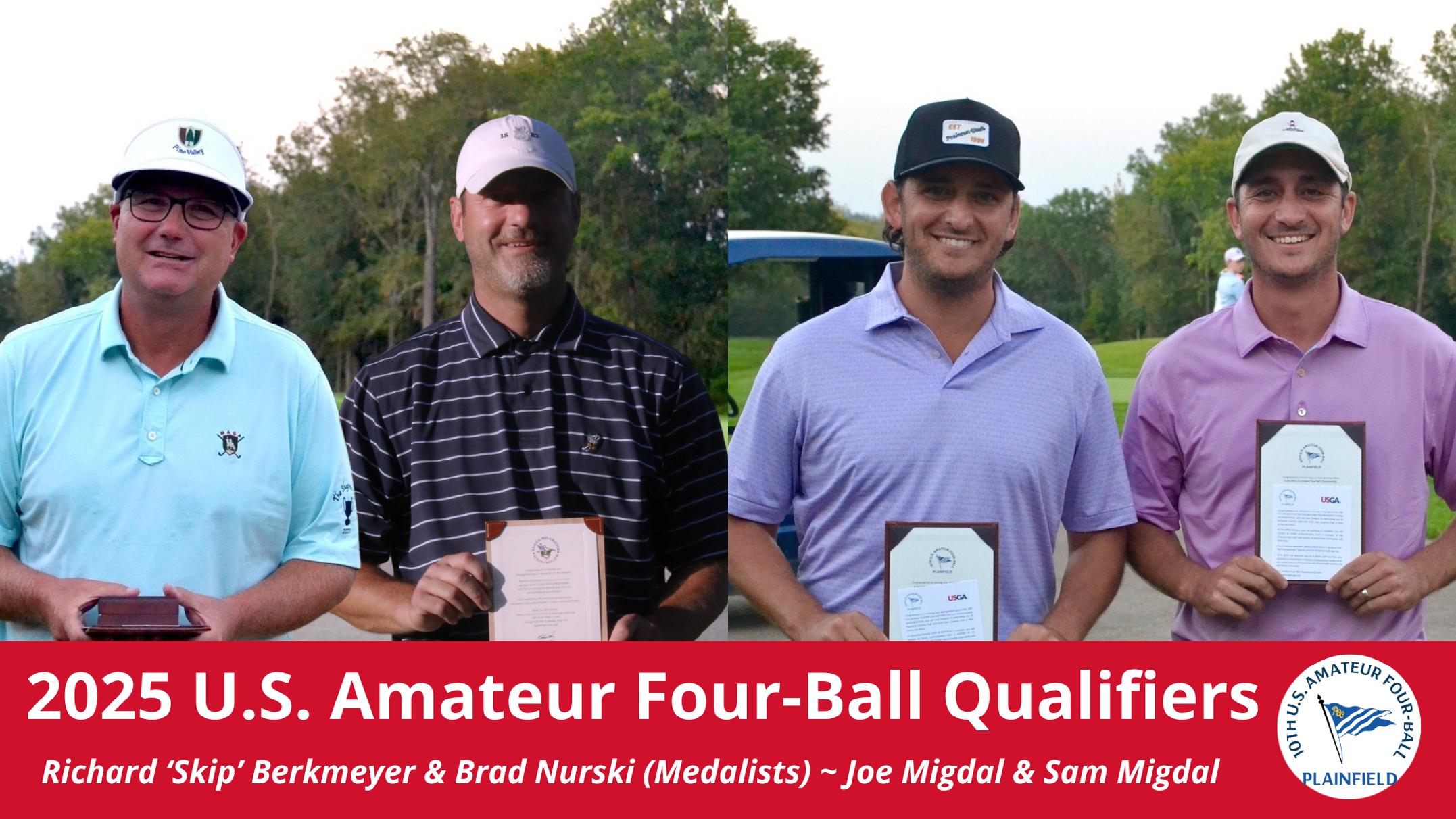
After November 14, Active Score Posting Season will be over for the year.
So what does this mean for you???
It means that any rounds played between November 15 and February 28 cannot be posted and counted towards your GHIN Handicap. This applies to any rounds played in the Metropolitan area, the entire state of Missouri, and many northern states. We know this seems drastic and crazy at times - especially when the weather is nice - but it is a necessary precaution because mother nature is often unpredictable. Here are some answers to some common questions regarding Inactive Season:
This is one of the most common questions, and as stated above mother nature can be unpredictable. The GHIN Handicap System uses the Course and Slope Ratings in its factors for establishing Handicap Indexes based one a golfer’s scores. Course and Slope Ratings are established/calculated based on the best conditions or the conditions that are likely and most common (aka what is normal for the course) during the peak and majority of the golf season - which for us would be summer/early autumn. Based on years of records of weather patterns and conditions across the area, the Inactive Season was established. We join the entire state of Missouri (Illinois has a very similar season) in our determination of Inactive Season. Starting in November, weather across the area can become unpredictable - it may be perfect or it may be bitter cold and snowing. The Inactive Season allows for these drastic weather changes to occur, courses and players to not stress over the conditions matching that used in the course rating (because a frozen ground is not the same as a warm one), and players to not worry that a round in these conditions will alter their Handicap Index in an unfair way.
What if I go somewhere warmer during the winter?
Going somewhere warmer? Lucky You! Many southern states have year-round active season due to the lack of colder, snowier conditions compared to those more north. If you travel, take your clubs, and tee it up, you CAN post those scores! And the score will count towards your Handicap Index. You can always check to see if the state you are travelling to is part of the always Active club. For a Full List of Active and Inactive Seasons, click here
When can I post again?
March 1, 2025 - our season is March 1 to November 14 every year. All of Missouri is the same and the rest of Illinois [outside of our area] is March 15 to November 14.
I just paid for my Handicap Index and you’re telling me I can’t use it?! Am I going to have to pay again in the Spring??
No, you do not have to pay again in the spring if you JUST paid. The Metropolitan and SIGA eClub Memberships run one year from the date you paid. So, if you activated your account in October 2024, your account will remain available to you and ready to use until October 2025. Take time this winter to hone in your skills, and then play and post starting March 1.
On September 26, nine golfers came together to play 100 Holes of golf in 1 day. At Family Golf and Learning Center’s Par-3 course, the 9 set off and powered through 100 holes. The golfers included members of the Family Golf & Learning Center Staff, 18Strong, and our Executive Director.
Participants:
Adam Betz - Team Family Golf (FGLC1)
Bobby Drummond - Team 18Strong
Liam Durbin - Team Family Golf (FGLC1)
Ryan McMullen - Team 18Strong
Patrick O’Neill - Team Family Golf (FGLC1)
Jeff Pelizzaro - Team 18Strong
Curt Rohe - Team Metropolitan
Blake Sharamitaro - Team Family Golf (FGLC1)
John Shepard - Team 18Strong

ALL golfers made it through the Hike, completing 100 Holes. All proceeds go directly to helping area kids access golf through rounds of $5 or less at participating courses.
Together we raised


100HoleComplete!

$7,724
For

Visit the Metropolitan Golf Foundation Social Media Pages to view footage from the day.

Dan O’Neill
The day finally came at the end of last month, an exciting day for a number of reasons.
Keep in mind the Metropolitan Golf Foundation finalized the purchase of historic Normandie Golf Course back in May 2022. And on a recent Wednesday morning, some 29 months of fundraising and organizing came to a head, and the work to revitalize one of the most historic courses in the country began.
The aforementioned “work” to be done at Normandie will be led by Jack Nicklaus, one of the most iconic players and golf architects in the history of the game. Nicklaus has designed and/or renovated more than 425 courses in his career, properties in more than 45 countries and 40 states. His “work” has touched facilities that have 60 major championships, six Ryder and Presidents cups and nearly 300 PGA Tour competitions. In short, when it comes to building golf courses, the “Golden Bear” has the golden chops.
That’s exciting.
Then there is the consideration of Normandie’s survival. This is a Robert Foulis original, designed and opened in 1901, among the first courses to open west of the Mississippi. Babe Ruth used to tee it up at Normandie,, so did “Babe” Didrikson Zaharias, Bob Hope and Frank Sinatra, Dizzy Dean and Stan Musial. So did generations of St. Louisans.
This golf course in north St. Louis County once was a vibrant community asset. The vision of the MGF (the philanthropic arm of
the Metropolitan Amateur Golf Association) and development partner Beyond Housing, as well as Nicklaus and his team, is to make Normandie an asset once again.
A rising tide lifts all boats, it is said. A thriving golf course can do the same.
“This is the greatest thing that could happen to this property,” former USGA president and Metropolitan Amateur Golf Association founder Tom O’Toole said when the property was purchased. “Otherwise, it would fall into disrepair.”
That’s also exciting.
Then there is the pure, unadulterated, put-your-peg-in-the-groundand-put-your-ball-in-the-air aspect of all this - that is, the golf part.
The industry had gone through big changes over the past 50 years, from growth spurt, to stagnation to a pandemic-fueled resurgence. Golf construction peaked in 2005, when 14,990 18-hole courses opened in the United States. That was almost double the number of courses (7,516) that came on line in 1970.
But since 2006, more than 2,800 golf courses have closed while only 600 have opened. This year, the Covid-caused spike in golf participation has continued, and through the first half of the year, fewer than 40 courses had closed, a significant decrease from previous years. But new construction is still slow. Golf courses get built about as often as rotary telephones, if you will.
Things in St. Louis are no different. In the early 2000s, renovations at Forest Park and the Highlands came to fruition and clubs like Old Hickory opened. But since that time, changes in the local golf landscape have been few and far between.
So, along with the Nicklaus name, in addition to the social and communal benefits, there is the anticipation of a new playing field to experience. Or as the Beatles put it on one of their early LPs, it’s “Something New!”

And that is exciting.
As our golf community has experienced through local facilities like Winghaven and Stonewolf, Dalhousie in nearby Cape Girardeau and the Club at Porta Cima at Lake of the Ozarks, Nicklaus Design knows how to cobble a course. In the case of Normandie, Nicklaus is donating his services and making this a “Signature” course. You can be assured his attention to the historic value and its classic properties will be both reverent and revitalizing.
Already, 21 acres of brush have been cleared and more than 300 trees - growth that had not seen a bladed edge in some 50 years. While the foundation for the original routing will be retained, the new Normandie grounds will be re-grassed and rejuvenated with new tees, putting greens, bunkers and state-of-the-art irrigation. The last time you saw Normandie it was 6,497 yards- the next time you see Normandie it will stretch 7,007 yards. It will have fresh perspectives, dynamic shot values and a new, multi-purpose clubhouse.
Oh yeah, and then there is one other exciting aspect of this that is not part of the remake. That is, after the Jack Nicklaus renovation is completed sometime in Fall, 2025, Normandie will continue to be a public facility. You and the Ol’ Bogeyman will be welcome to make a tee time, to put a peg in the ground and put a ball in the air.
Now that’s exciting!
The spine is made up of vertebrae and discs. The discs have two layers, an inner layer and an outer layer, to keep it simple. The discs act as a shock absorber between the vertebrae. Increased pressure within the disc space, due to heavy lifting, twisting, or even bending down to tie your shoes, can cause a disc bulge or herniation. This is where the disc protrudes out into the spinal canal, compressing the nerves in the region. This can cause motor weakness, along with pain and numbness down the irritated nerve route, into the glute and lower extremity.
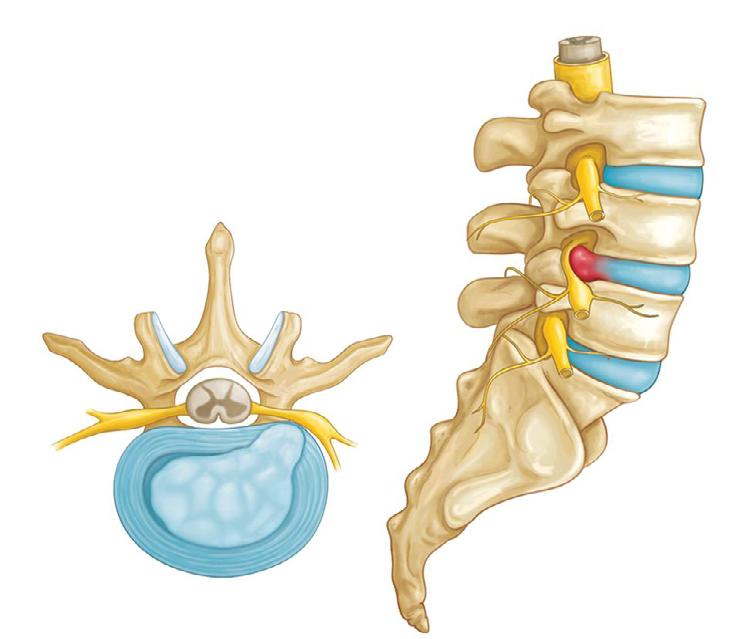
90% of patients resolve within three months of conservative care. Treatment is movement based and depends on whether the bulge or herniation is posterior, anterior, lateral, or a combination of two. Specific exercises designed by your chiropractor or physical therapist can help fully resolve this diagnosis.

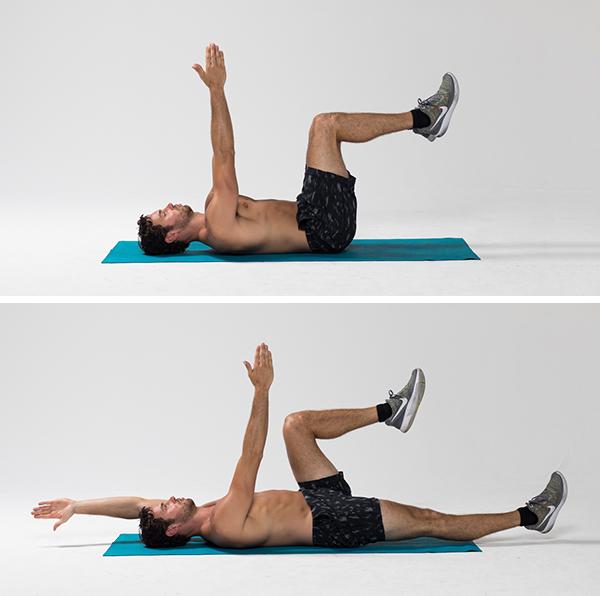
For any of you experiencing these symptoms and can’t find relief, reach out to us at Golf and Training Institute , and we’ll send you a Free Back Pain Demo!



• The main exercise that we have found to help posterior lumbar disc bulges and herniation are Mckenzie Extension Press-Ups, or Cobra Press-ups. This is a repetition move and should be performed every single day.
• Once the symptoms start to centralize, isometric core stabilization exercises, such as dead bugs and bird dogs, with help strengthen the core and low back, preventing this from happening again.




Dr. Zach Cutler, DC Owner of Golf and Training Institute; Sports Chiropractor; Titleist Performance Institute Specialist


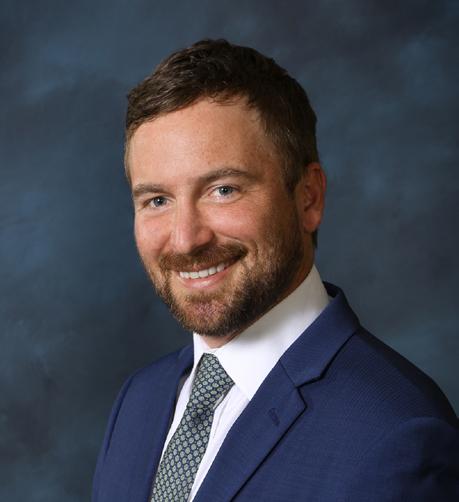

I was given a fascinating book recently titled “Golf’s Cause and Effect - A History of Greenkeeping” by Melvin B. Lucas Jr. It is worth pausing for a look backward at how the game of golf, golf course maintenance, and expectations have gone through an amazing evolution in a relatively short period of time. Golf was played for four hundred years with minimal maintenance. Holes were hand dug in the sand with the location denoted by one or two gull feathers stuck into the ground. It was primarily a winter sport because in the summer the grass grew too tall to play in. The only mowing for a long time was done with sheep. In the 1800s horses were used to pull grass cutting implements and rollers to smooth the putting surface. Golf professionals assumed the greenkeeping duties until the 1920s when a dedicated greenkeeper became more commonplace.
Golden Age architecture has made a resurgence of appreciation in recent years, with names like Charles Blair MacDonald, Seth Raynor, Allister MacKenzie, among others of that era still being discussed and revered. It was around that time when the greenkeeper began to evolve into a full-time profession. Greenkeepers have their own Golden Age icons, including Old Tom Morris, known as “the father of modern greenkeeping” who maintained St. Andrews in the late 19th and early 20th century. John Morley was the founder and first president of the association that is known today as the Golf Course Superintendents Association of America (GCSAA). Below are some of my favorite excerpts from a speech by John Morley in his 1929 address to the Association:
“The greenskeeper of yesterday had a more peaceful mind, although he lacked the knowledge and experience which greenkeepers possess today. When he retired for the night his sleep was usually quiet and refreshing.”
“Greenkeeping, as I see it – calls for better trained greenkeepers and for men who are willing to keep abreast of developments. The day of the greenkeeper with an unwillingness to learn from or to help others is fast coming to a close. Greenkeepers have been too modest all along and for that reason golfers have blamed them for everything from an incurable slice to a lost ball.”
These quotes from nearly 100 years ago predicted the trajectory of this industry and it continues to evolve. The industry is changing faster than ever in an attempt to match expectations. Modern golf course maintenance options include robotic mowers, a computerized golf ball to track data on playability, various instruments to detect the moisture levels of the soil, drones, and mowers with six-figure price tags. Modern superintendents are well educated and trained in soil science, horticulture, equipment maintenance, accounting, and leadership. We have come a long way from the era of Bill Murray’s character of Carl Spackler in the movie Caddy Shack.
With history as our guide, the evolution of new tools and technologies will only continue, and expectations will only get more demanding. Advances in technology have helped us push the limits of the turfgrasses that we grow but remember that we are still growing actual living plants that are being maintained very close to the edge of their biological limitations. Especially in our St. Louis climate, there are times when we need to prioritize plant health over playing conditions.
As a superintendent, I am motivated by the pursuit of perfection in course conditions. As a golfer, I also appreciate a perfect lie and good course conditions but I also value the challenge and sport of an imperfect lie or a challenging shot. Inconsistency and imperfection have always been a part of this game and provides a good test of our physical skills and mental fortitude. Next time you find your ball in an imperfect lie, rather than directing frustration to the Superintendent or golf maintenance staff, I suggest you embrace the challenge as you consider the course conditions that golfers happily endured 100 years ago.
I’ll leave you with a quote from a Golden Age Icon, C.B. MacDonald:


“The essence of the game is inequality... Take your medicine where you find it and don’t cry. Remember that the other fellow has got to meet exactly the same inequalities”
Colin Morikowa was caught in a complicated situation late last year - and over his Green Reading material! Yes, there are restrictions on those...
During the Hero World Challenge last December, Morikowa - or rather his caddie - had used a level to gauge the degree of slope on the greens. Which could have been legal, EXCEPT that it was written down in Morikowa’s yardage book that was used during play. There was evidence to show that the notes of the slope were used during the playing of the fourth hole at Albany Golf Club in the Bahamas.

Players on the tour are permitted to have notes in their yardage books, but there are some restrictions to help keep the game as close to the traditional methods of playing, such as the fundamentals/skill of reading greens. The PGA Tour Rules Committee has placed the Model Local Rule G-11 in their rules of play for their events, which requires that notes taken in a yardage book follow the guidelines on size, scale, and that the contents (additional handwritten notes) be retained using only the eye and feel of the player [or their caddie]. This means you should not have notes regarding lines/slopes that have been retained via other means, such as a level in this case.
After playing partner Matt Fitzpatrick had recalled a conversation he had with Morikowa on the course, he contacted the chief referee regarding the information. Fitzpatrick was not looking to get Morikowa in trouble, but rather checking the limitations of the Rule and hoping he could use these means himself. But, this just peaked the interest and concern of the official, who then had to get to the bottom of the situation. Evidentally, it was determined that the process of retaining this information, having it written in the green reading book, and using it was not a legal act. This lead the chief official to talk to Morikowa and his caddie, ending with Morikowa being assessed a general (two-stroke) penalty.
The tour officials know that players may use other means or formulas to determine green slopes during their many practices to grow acclimated to the course, but the important thing is that they are not written down. Those details have to remain mental notes that one knows and uses from memory.

The key takeaway here, be careful what you write in your book. There are many notes you CAN take, but you should also be aware of any Model Local Rules that are in place during a competitive round. Know what measuring materials you are allowed. In most amateur events - unlike the pros - you can use range finders, but there are even restrictions on those. And when in doubt, ASK! Ask your Rules Officials or head of competition. They would much rather you ask and prepare beforehand accordingly, than have to issue a penalty during or after play.
So what’s the deal with your range finders?
John explains Distnace Measuring Devices -->
Dear John: Many new range finders come with a gradient (slope) measurement function. They work great for shots from elevated tees and for shots to elevated greens. Are they legal in competitions?
- FarSighted

Dear FarSighted: Yet another instance of technology impacting the game of golf. After many years, the Rules of Golf now permit by default the use of electronic distance measure devices (DMDs). However, Rule 4.3a(1) provides that the gradient function must be turned of in competitions (i.e. distance measurement only). Further, on many professional tours and at USGA and R&A Championships, a Local Rule (G-5) prohibits the use of DMDs altogether.
The timeline below shows how electronic distance measuring devices have been phased into the Rules.
Pre-2006: The use of any kind of DMD is prohibited, period. The penalty is disqualification.
2006: Decision 14-3/0.5 permits use of DMDs that measure distance only (no wind or gradient capability allowed) - but via a Local Rule. Otherwise, the penalty remains disqualification.
2008: A note added to Rule 14-3 permits DMDs that measure distance only -- via a Local Rule. Decision 14-3/0.5 says DMDs equipped with wind or gradient functions are prohibited even if those functions are turned off. The penalty remains disqualification.
2016: DMDs that measure distance only are still permitted -- via a Local Rule. Decision 14-3/0.5 is further modified such that DMD’s equipped with wind or gradient capability may be used IF these functions are turned off. Penalty changed to loss of hole in match play and two strokes in stroke play for first offense, and disqualification for second offense of Rule 14-3.
2019: DMDs (distance measurement only) are finally permitted by default (Rule 4.3a(1)) unless prohibited by Local Rule G-5. DMDs equipped with wind or gradient capability may be used, but only if these functions are turned off. The penalty remains loss of hole in match play and two strokes in stroke play for the first breach, and disqualification for the second breach of Rule 4.3, separated from the first breach by an intervening event (player makes a stroke or player becomes aware of a breach of a Rule).

Golf is a game for everyone, including people with disabilities. In recognition of this fact, the United States Golf Association (USGA) debuted the U.S. Adaptive Open in 2022. Whether a course is hosting a national championship for adaptive golfers or simply trying to improve access and enjoyment for normal play, questions arise about how to best accommodate adaptive players and whether there are any unique course maintenance considerations involved.
A common area of uncertainty among golf course operators is how to manage seated golf cart access onto putting greens. A key focus is having players with disabilities feel welcome and included, but many decision-makers at golf facilities have also expressed concern over potential surface disruption that may be caused by a seated golf cart driving on a green, especially following rainfall. There is a lack of data on the effects of single-rider seated carts on putting greens, and the few studies conducted have been in a lab setting or with mobility devices that are no longer used in golf (Gentilucci & Murphy, 1997; Gross, 2007).

It would be beneficial for the adaptive golf community and all the courses eager to host adaptive players to determine what, if any, impact seated carts have on putting greens and to develop guidelines regarding their use during adaptive golf events or routine play. To better understand the impact of modern seated carts on putting surfaces, the USGA Green Section initiated two field studies in July of 2024 at the 3rd U.S. Adaptive Open, held at Sand Creek Station Golf Course in Newton, Kansas.
The USGA Conducted the Following Studies: Field Study 1: Assessing the Impact of Two Types of Seated Carts on Putting Green Smoothness and Trueness at Three Volumetric Water Content Levels
Field Study 2: The Effect of Traffic From Multiple Seated Carts on Putting Green Smoothness
For More Details on the Tests and the Results Click Here
Implications for Golf Courses and Adaptive Golfers
The observations and preliminary results of these studies tell a positive story for golf courses that host adaptive players. Driving the most common types of seated carts across a putting green, even if it is relatively wet, had no long-term effect on the quality of the putting surface in this study. Any effects on trueness and smoothness that were observed were rare, small and temporary. More needs to be studied about how VWC influences putting green smoothness and trueness after traffic. Common sense would suggest that drier conditions would lead to less impact, but there are other factors involved. It’s also worth noting that the greens at Sand Creek Station were not rolled during the championship. Previous studies using the GS3 have found that daily rolling of putting greens significantly improves smoothness and trueness metrics, and, in a way, “resets” the surface quality.
These findings are based on the specific types of carts, traffic patterns, and putting greens used in this research. As mentioned at the start, little work has been done in this area and we hope this pilot study encourages additional research in areas that are important to the adaptive golf community. Among other important topics, more research is needed to better quantify the effects of turning, multiple successive passes from a cart, the duration a cart sits in one place on a green (i.e., while a player is putting or waiting), and how tire inflation affects the legacy of traffic.
Courses accommodating seated players using other types of carts and golf courses with native soil putting greens may wish to exercise caution, especially following inclement weather. Golf course superintendents are experts in managing traffic and are an excellent resource for golf course decision-makers who have questions about when to allow seated carts on greens. Similar to the dreaded “cart path only” sign, there will be times when seated players may not be allowed on greens to protect the turf. Sand Creek Station’s superintendent, James Houchen, grew-in the golf course and has developed an intimate knowledge of the putting greens over his 20 years on-site. Ensuring the integrity of the putting surfaces during the championship was a priority, and Houchen did not have any concerns about seated carts driving on the greens at any time during the Adaptive Open. Superintendents at many courses hosting seated players have reported that single-rider, seated carts have a similar impact on the putting surface as a triplex mower (Skorulski, 2018).
Keep in mind that the USGA puts lots of thought and effort into selecting a golf course to host an Adaptive Open, accounting for criteria like the accessibility of the terrain, course features and many other factors. The reality is that not all courses may be able to accommodate seated carts at all times, but it is important that they make an effort. No matter the location or situation, there are steps courses can take to be more accessible for adaptive golfers.
A primary goal of establishing the U.S. Adaptive Open is to catalyze more inclusion for golfers with disabilities in the United States and around the world. Our hope is that this research helps address concerns about allowing seated golf carts on putting greens and provides useful information about when impacts to the putting surface may occur and how long they are likely to last.
Tour Championship - Scottie Scheffler
Procore Championship - Patton Kizzire
Presidents Cup - Team United States
Sanderson Farms Championship - Kevin Yu
Black Desert Championship - Matt McCarty
Shriner’s Children’s Open - J.T. Poston
Zozo Championship - Nico Echavarria
Simmons Bank Open - Paul Peterson
Nationwide Children’s Open - Frankie Capan III
KF Tour Championship - Braden Thornberry
CRMC Championship - Frederik Kjettrup
Fortinet Cup Championship - Will Cannon
Ascension Charity Classic - Y.E. Yang
Sanford International - Steve Stricker
PURE Insurance Championship - Paul Broadhurst
Constellation FURK & Friends - Rocco Mediate
SAS Championship - Jerry Kelly
Dominion Energy Charity Classic - Tim O’Neal
Simmons Bank Championship - Padraig Harrington
Walmart NW Arkansas Championship - Jasmine
Suwannapura
Kroger Queen City Championship - Lydia Ko
Solheim Cup - Team United States
Maybank Championship - Ruoning Yin
BMW Ladies Championship - Hannah Green
Buick LPGA Shanghai - Ruoning Yin
KPMG Women’s Irish Open - Annabel Dimmock
La Sella Open - Helen Briem
Lacoste Ladies French Open - Chiara Tamburlini
Wistron Ladies Open - Chiara Tamburlini
Hero Women’s Indian Open - Liz Young
Four Winds Invitatonal - Yahui Zhang
Guardian Championship - Fatima Hernandez Cano
Tuscaloosa Toyota Classic - Ingrid Lindblad
Murphy USA El Dorado Shootout - Jenny Bae
Epson Tour Championship - Heather Lin

Betfred British Masters - Niklas Norgaard
Omega European Masters - Matt Wallace
Amgen Irish Open - Rasmus Hojgaard
BMW PGA Championship - Billy Horschel
Spanish Open - Angel Hidalgo
Alfred Dunhill Links - Tyrrell Hatton
Dunhill Team - Thorbjorn Olesen/Dermot Desmond
FedEx French Open - Dan Bradbury
Andalucia Masters - Julien Guerrier
Genesis Championship - Byeong Hun An
Rosa Challenge Tour - Angel Ayora
Big Green Egg German Challenge - Rasmus Neergaard-Petersen
Portugal Open - Matt Oshrine
Italian Challenge Open - John Parry
Swiss Challenge - Euan Walker
D+D REAL Czech Challenge - Benjamin Follett-Smith
Hainan Open - Hamish Brown
Hangzhou Open - Conor Purcell
Bain’s Whiskey Ubunye Championship - Jean Hugo
Vodacom Origins of Golf Sishen - Yurav Premlall
Vodacom Origins of Golf Wild Coast - Jonathan Broomhead
Fortress Invitational - Robin Williams

The day has finally arrived.. We have officially broken ground at Normandie Golf Club!
It was a great day at Normandie as we celebrated a momentous day in the progression of the Normandie Reimagined project. Community leaders, along with the pioneers of this project joined together to tribute the importance and significance of this project. Senator Brian Williams, Councilwoman Rita Days, County Executive Dr. Sam Page, and Beyond Housing’s Chris Krehmeyer all spoke at the ceremony, expressing their enthusiam and support for the work that is set to be done. Though unable to attend in person, Jack Nicklaus and USGA President Fred Perpall sent in videos to provide their unwavering support of Normandie Reimagined and their belief in the future of this property.
This project reaches far beyond the bounds of revitalizing the fairways, and strives to become a piece of the community by providing a place of activity, learning, and employment. There are many programs lined up to utilize this course and space upon completion. The First Tee of St. Louis plans to make Normandie their flagship location, and the Western Golf Association is adding a caddie program at the course with the caddies becoming eligible for Evans Scholars college scholarships. This is just the start as we continue to build the future of Normandie and work with groups within the industry to find new ways we can tap into all of the potential of this community asset.
The support of the community and its leaders has been essential to the fruition of this project, and with the continued support, we will bring this community treasure back to its glory.







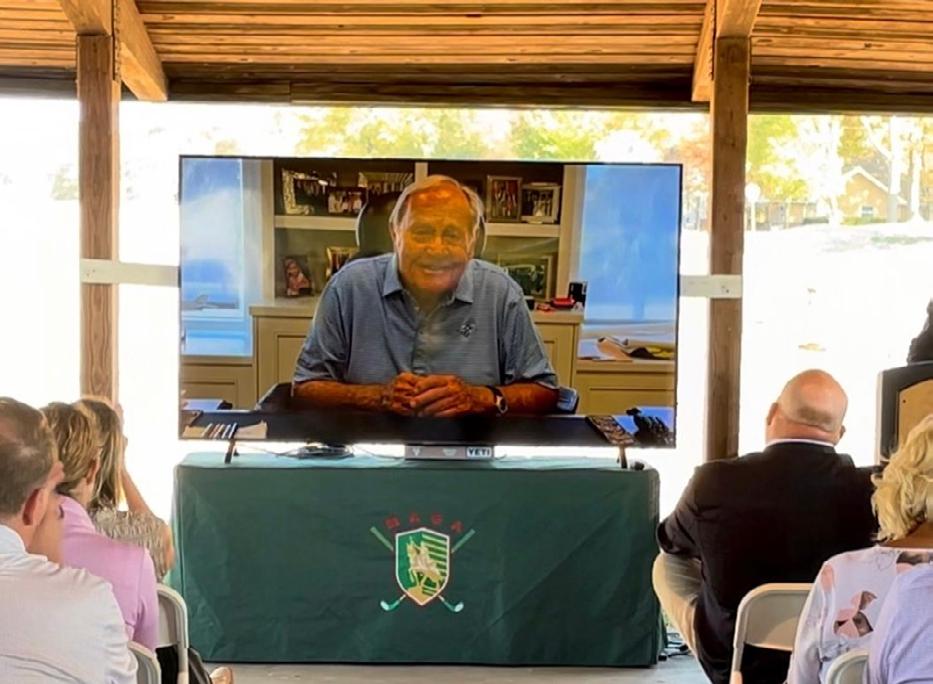


The Metropolitan Golf Foundation owns Normandie Golf Course and is behind the Normandie Reimagined project in conjunction with Beyond Housing. Now that ground has been broken and this project continues forward, we want you to be in the know. That is why we encourage you to follow the Metropolitan Golf Foundation on social media. We will be posting updates and information about this venture as much as we can to keep the public in the loop. Use the links below to follow the Foundation across all social media. And check our website for more details on the project.





Follow Us:
MetroGolfFoundation on Instagram
MetropolitanGF on Facebook and X
Metropolitan Golf Foundation on LinkedIn
For more information on the Normandie Renovation Project and how you can help, visit https://www.metga.org/nicklaus-and-normandie or contact normandie@metga.org

“The appeal of this project to me was to be involved in an effort that could serve as a catalyst to change needed in our country today, beginning with parts of St. Louis County. Restoring Normandie for a community in need will have a long-lasting positive impact on the lives of youth in St. Louis.”
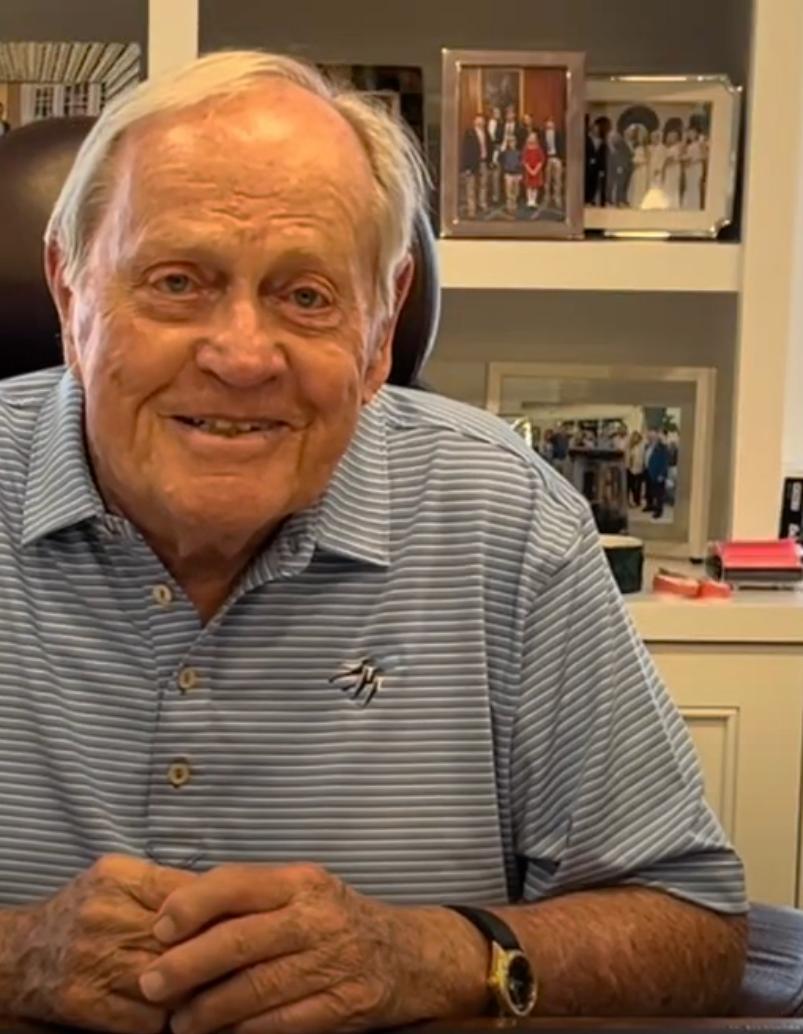
-Jack Nicklaus on his involvement in Normandie
Reimagined






